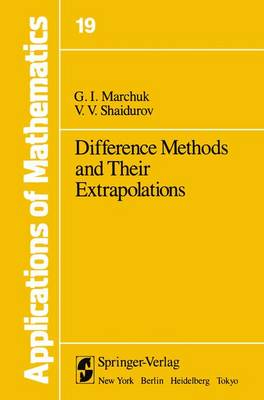Stochastic Modelling and Applied Probability
2 primary works
Book 2
The present volume is an adaptation of a series of lectures on numerical mathematics which the author has been giving to students of mathematics at the Novosibirsk State University during the span of several years. In dealing with problems of applied and numerical mathematics the author sought to focus his attention on those complicated problems of mathe- matical physics which, in the course of their solution, can be reduced to simpler and theoretically better developed problems allowing effective algorithmic realization on modern computers. It is usually these kinds of problems that a young practicing scientist runs into after finishing his university studies. Therefore this book is pri- marily intended for the benefit of those encountering truly complicated problems of mathematical physics for the first time, who may seek help regarding rational approaches to their solution. In writing this book the author has also tried to take into account the needs of scientists and engineers who already have a solid background in practical problems but who lack a systematic knowledge in areas of numerical mathematics and its more general theoretical framework.
Book 19
Difference Methods and Their Extrapolations
by G. I. Marchuk and V.V. Shaidurov
Published 27 June 1983
The stimulus for the present work is the growing need for more accurate numerical methods. The rapid advances in computer technology have not provided the resources for computations which make use of methods with low accuracy. The computational speed of computers is continually increasing, while memory still remains a problem when one handles large arrays. More accurate numerical methods allow us to reduce the overall computation time by of magnitude. several orders The problem of finding the most efficient methods for the numerical solution of equations, under the assumption of fixed array size, is therefore of paramount importance. Advances in the applied sciences, such as aerodynamics, hydrodynamics, particle transport, and scattering, have increased the demands placed on numerical mathematics. New mathematical models, describing various physical phenomena in greater detail than ever before, create new demands on applied mathematics, and have acted as a major impetus to the development of computer science. For example, when investigating the stability of a fluid flowing around an object one needs to solve the low viscosity form of certain hydrodynamic equations describing the fluid flow. The usual numerical methods for doing so require the introduction of a "computational viscosity," which usually exceeds the physical value; the results obtained thus present a distorted picture of the phenomena under study. A similar situation arises in the study of behavior of the oceans, assuming weak turbulence. Many additional examples of this type can be given.

